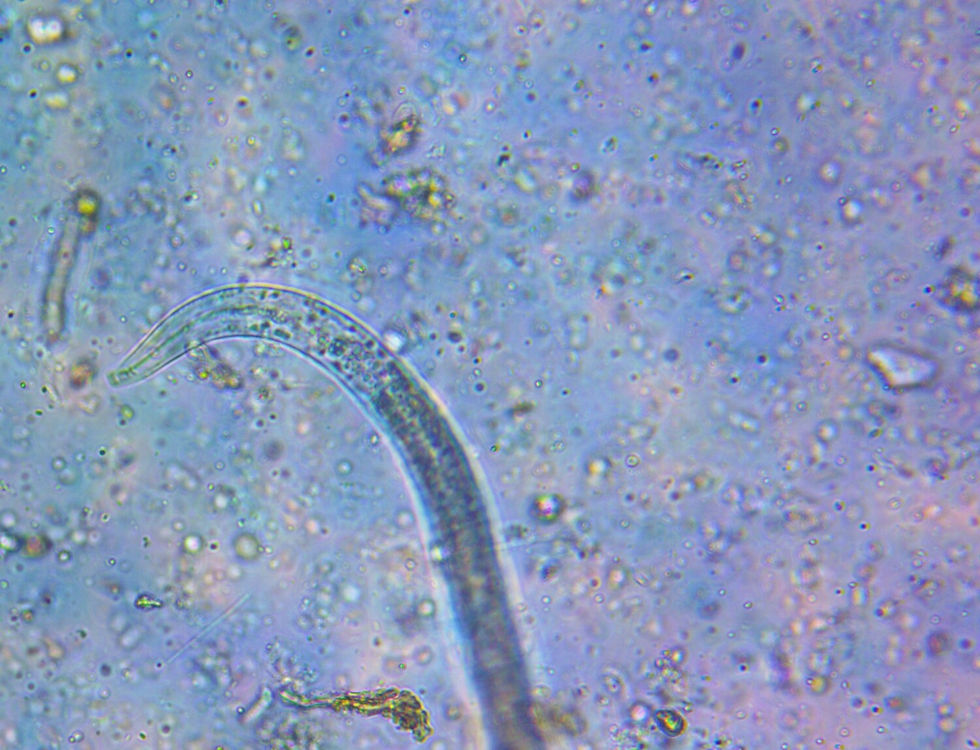Beneath our feet, a hidden world teems with life. The soil food web, a complex ecosystem that sustains life on Earth, is a bustling metropolis where countless organisms play their parts. Among these unsung heroes are nematodes, tiny roundworms that are often overlooked but are crucial to maintaining soil health and the balance of life above ground. In this post, we'll delve into the world of nematodes and explore their vital role in the soil food web.

Unseen Architects of Soil Health
Nematodes are microscopic worms that inhabit the soil in vast numbers, with hundreds of species coexisting in a single handful of earth. They are often classified into three main groups based on their feeding habits: bacterivores (feeding on bacteria), fungivores (feeding on fungi), and predators (feeding on other nematodes, protozoa, and even small soil insects).
Bacterivores: Recycling the Soil
Bacterivorous nematodes play a crucial role in nutrient cycling. They graze on bacteria, regulating bacterial populations, and releasing nutrients locked within bacterial cells. This process enhances nutrient availability for plants, promoting healthy growth and vitality.
Fungivores: Balancing Fungal Populations
Fungivorous nematodes, as the name suggests, feed on fungi. In doing so, they help maintain a balance between different fungal species in the soil. This balance is vital because certain fungi can become pathogenic when their populations grow unchecked. Fungivores act as natural regulators, preventing outbreaks of harmful fungi.
Predators: Keeping Pests in Check
Predatory nematodes are the lions of the soil, preying on other microscopic organisms. They are a natural defense against soil pests such as root-knot nematodes and harmful insects. By controlling these pests, predatory nematodes contribute to healthier plant ecosystems and reduce the need for chemical pesticides.
The Impact on Soil Structure
Beyond their role in nutrient cycling and pest control, nematodes also influence soil structure. Their movements create channels in the soil, allowing for improved aeration and water infiltration. This enhances the overall health of the soil and supports the growth of plant roots.

Nematodes as Bioindicators
Nematodes are sensitive to changes in soil conditions and can serve as bioindicators of soil health. Monitoring nematode populations can provide insights into soil quality, helping farmers and gardeners make informed decisions about land management practices.
Conclusion: Nematodes, often unseen and underappreciated, are essential players in the intricate web of life beneath our feet. Their diverse roles in the soil food web contribute to the health of our ecosystems, from nutrient cycling to pest control and soil structure improvement. Understanding and respecting the importance of these tiny organisms is key to maintaining healthy soils and sustaining life on our planet. So, the next time you walk through a garden or a field, remember that there's a bustling world of nematodes beneath the surface, quietly but tirelessly shaping the world above.







Comments